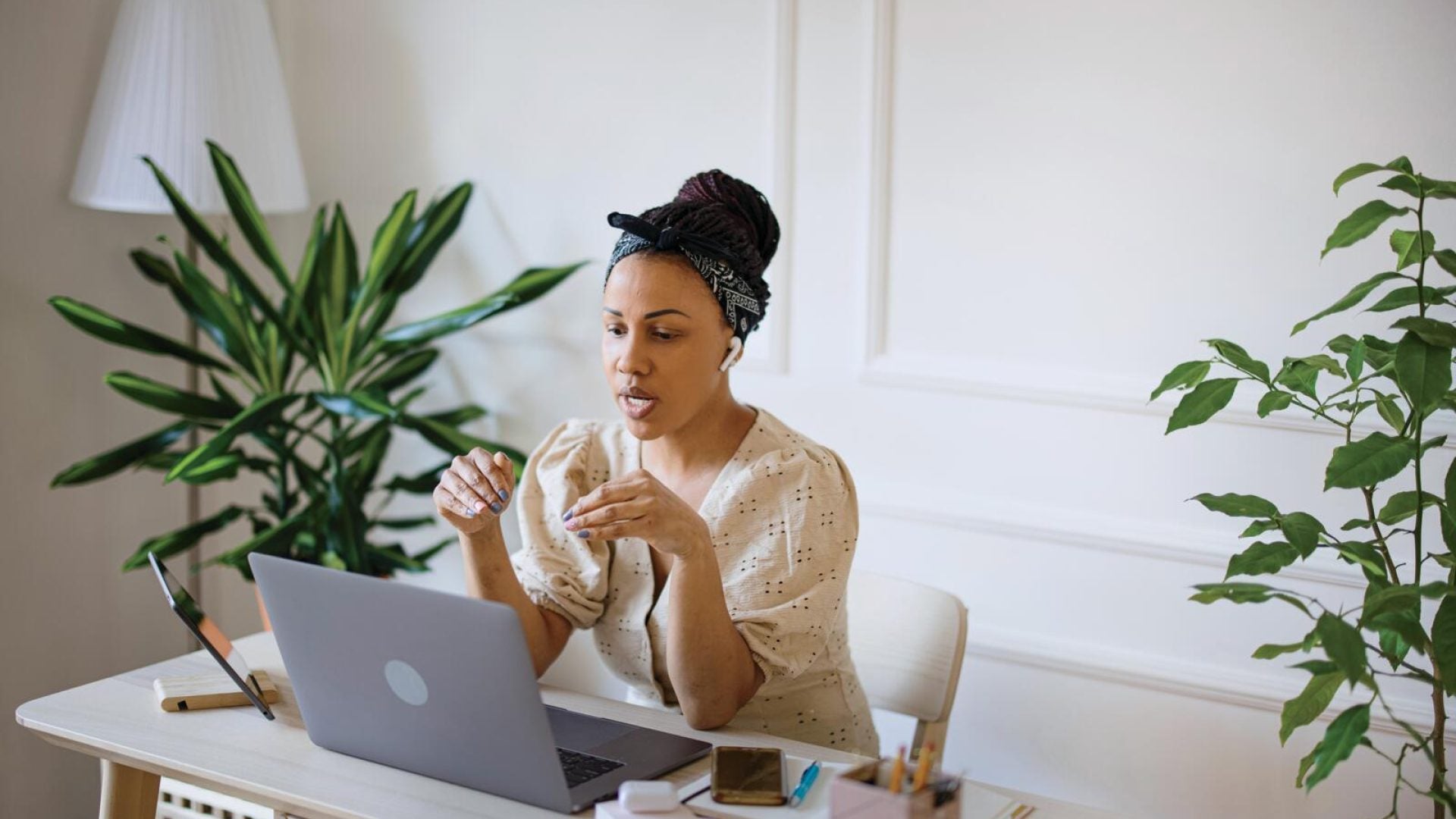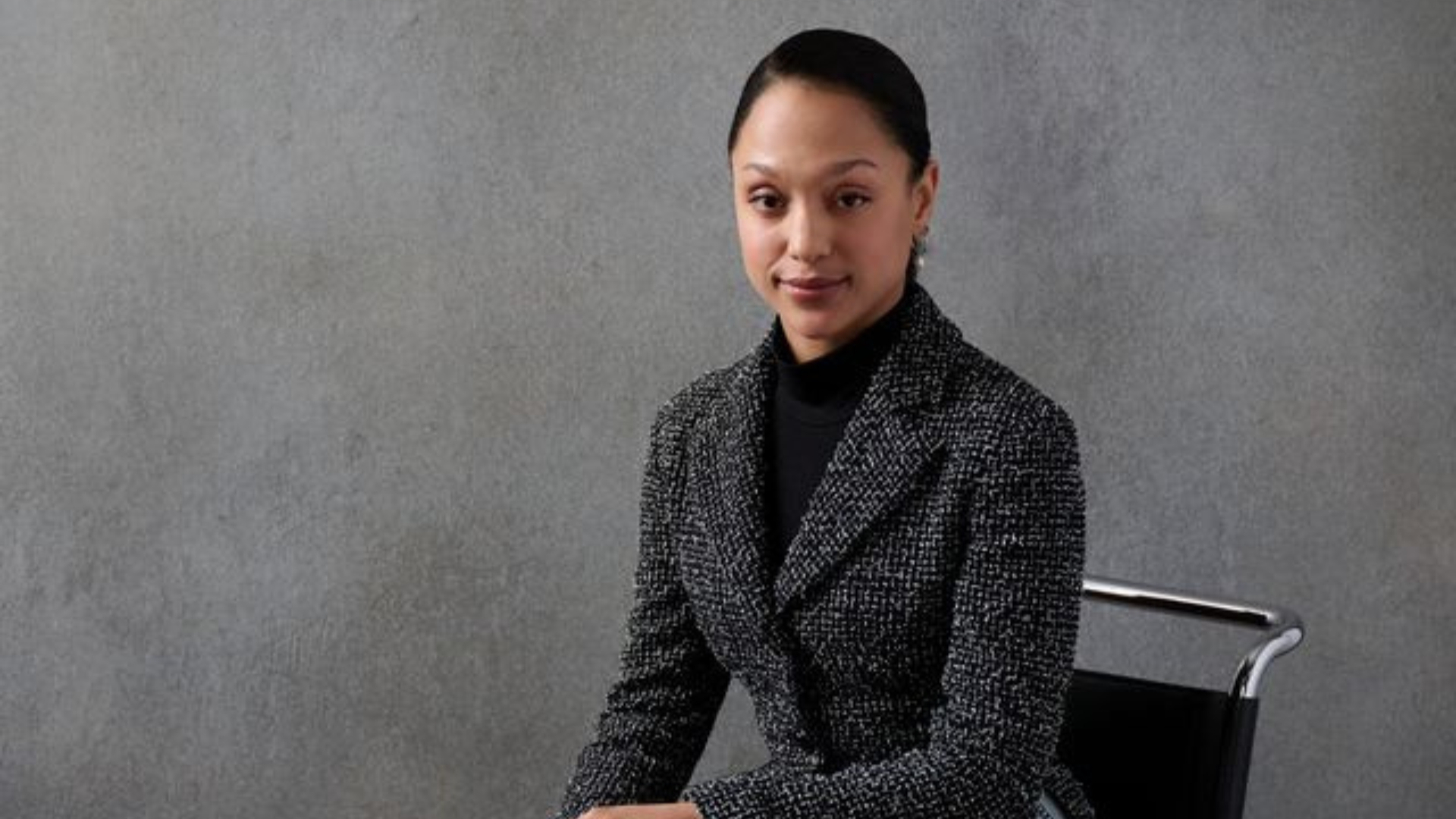
Now more than ever, we must ask ourselves what it means to show up in this world, assert our humanity, and claim our bodies in the face of Trumpism. In this sense, we believe there is also a mandate to celebrate the many stylistic choices and cultural visions of Black women and femmes whose very life and breath bring forth new possibilities for our collective freedom. Legacy Russell embodies this sort of liberatory experimentalism.
For Legacy, style is as much an aesthetic choice as it is a politic and way of being in the world. From their role as the executive director and chief curator of the experimental arts institution The Kitchen, to their work as a writer and style maven, Russell leads a life of intentional vibrancy. Clothes seem in this sense, a reflection of their commitment to contemporary art and the avant-garde, a tradition at odds with the type of hyper-consumerism that has permeated our feeds and psyche. Much like how their curatorial practice has brought forth a new Black imaginary, so has their definitive style, which might be best summed up as an homage to their lineage and unique form of ancestral adornment.
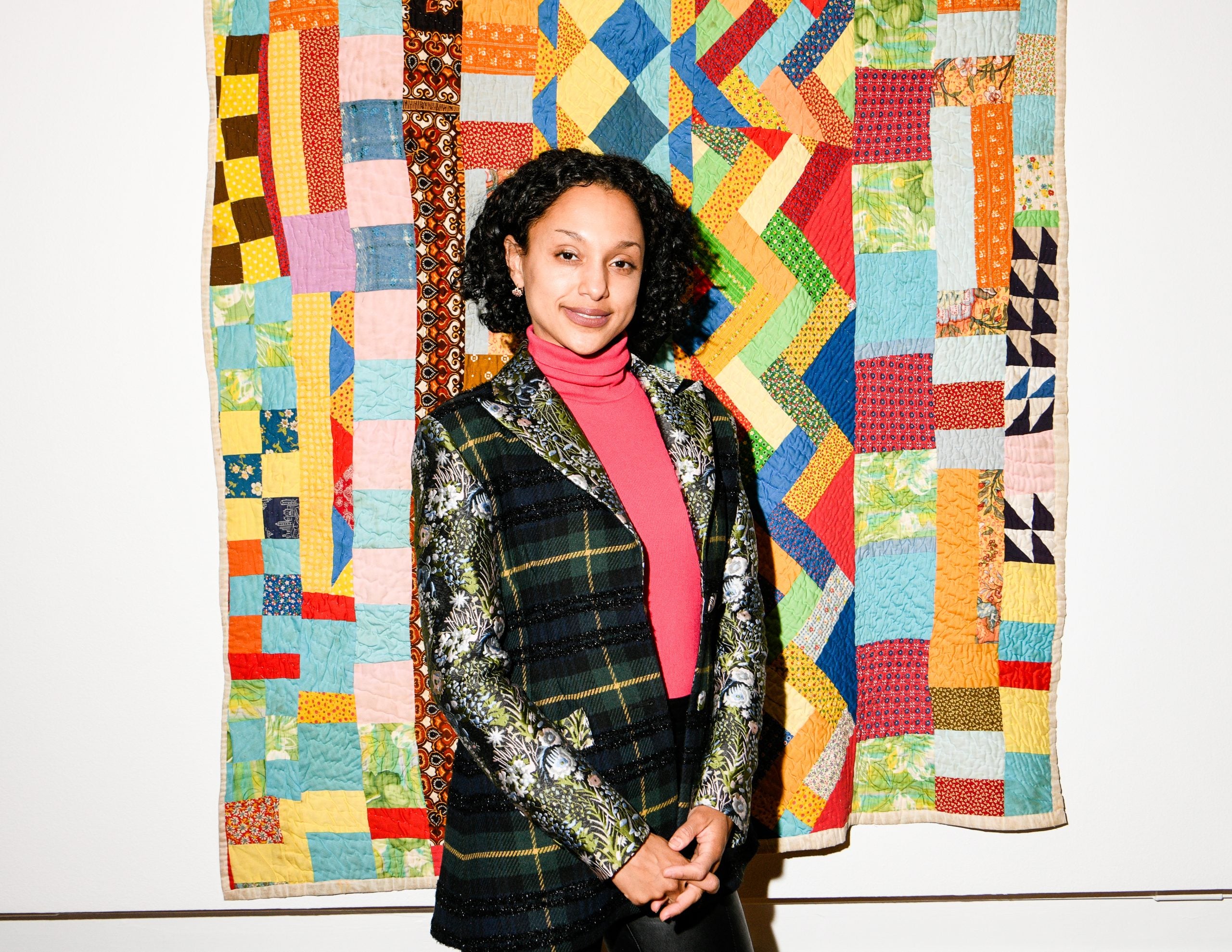
Most recently, Russell celebrated the launch of The Kitchen’s capsule clothing collaboration with the Paris-based brand, Études Studio. The collaboration explores the ephemerality of the 20th-century avant-garde movement through a sartorial approach to engaging the artist’s way of “moving, evolving, and creating in the world.” The clothing items reflect a blend of functional utilitarianism with the “purity” and “form” of Parisian elegance. In the spirit of this collaboration, Russell affirms, “It’s really necessary to identify where one’s self-love is.” It is clear that for them, love is the charge and style is the vehicle.
Below we caught up with Legacy Russell to discuss their personal style, an intentional launch with Études Studio, musings on the relationship between digitality and trends, and more.
ESSENCE: What I appreciate about how you show up is that your silhouettes are dimensional and the colors you wear pop in a beautifully architectural way. I often think about how white supremacy and patriarchy want us to shrink. But your aesthetic choices seem in this sense an assertion of your expansive humanity. How do you define your personal style?
Legacy Russell: I think that I’ve always been someone who is really interested in structural clothing, and things that are really bright. My style very much draws from the influences of my mother and grandmother. My mom’s family is from Hawaii, and that tradition comes with a lot of color and texture, and we love a good ruffle. I was born and raised in New York City, and my dad was a photographer from Harlem. My parents met in the East Village in the seventies. A huge part of my personal style also comes from a utilitarian approach to an artist’s life. All of this has become a part of what I admire—bringing some of that high femme island aesthetic to downtown New York, where there’s an edge of punk and street style too.
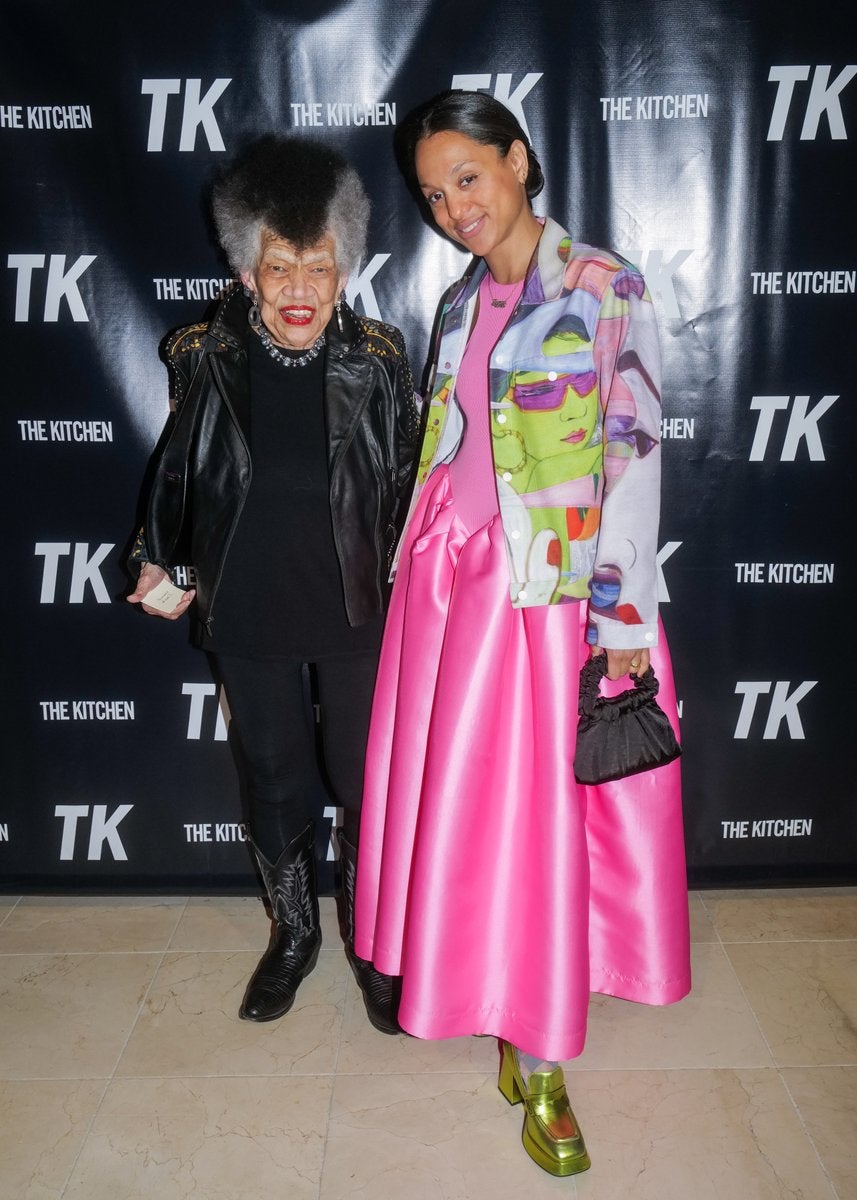
The Kitchen feels like one of the last true avant-garde art spaces in New York City. A few weeks ago we celebrated The Kitchen’s Fall Party and Benefit where you debuted a series of clothing items for sale with Études Studio, inspired by your rich archives. How did this fashion-forward project come to be?
This is a collaboration that is unprecedented for both organizations. And with that is an exciting opportunity to double down on what have been commitments to avant-garde experimentalism across both Études Studio, as a brand, and The Kitchen, as a cultural space and art institution. We began our discussion with Études being deeply inspired because they have such an amazing history of working very closely with artists and artist estates to realize capsule collections. With a rich history of 50-plus years, alongside the archive as a pillar to our ongoing work, this felt like a very logical partnership, and a way to celebrate The Kitchen and its relationship to life and the traditions of new media and performance-based work, as reflected both through our archive, and through a line of clothing that raises funds and awareness and support for our institution, but also really is immensely artful in its own right.
In addition to the fall party, The Kitchen also just debuted its exhibition Code Switch: Distributing Blackness Reprogramming Internet Art with the Schomburg Center for Research in Black Culture. So often we see Black art exhibited in downtown galleries and consumed by largely non-Black audiences in a way that at times, can feel extractive. We need more Black art in Black spaces. Can you talk to me about the importance of partnering with the Schomburg Center for this exhibition?
The Schomburg is one of if not the most important Black archives in the world. It is a site for research, cultural production, and memory for Black people. And it feels like a really important moment to bring The Kitchen, its history, and its archive into exchange and collaboration with a space that has been as important as the Schomburg. This is the first time that the Schomburg Center and The Kitchen have been in collaboration. As the first Black executive director and chief curator of The Kitchen, it is something that I hold very near and dear to me as a way of honoring the histories and the work of those who have brought us to this place.
And then I look outward at the mandate of Code Switch, which is acknowledging contributors of African descent who have been critical in helping us expand and transform our ideas around Black data technology and new media practices, and that being something that intersects with a wide number of histories. I think it’s a really meaningful thing to be asking questions about what has our archive served, and for whom? How can we make sure that we’re honoring those who have been really transformative and groundbreaking within that pathway? This is part of what brought us together with the Schomburg.
In addition to the Études launch, you were recently at the Studio Museum gala. You looked beautiful. And I also saw you at the Schomburg Center, as you were running off to catch your flight to Paris for Art Week. How do you decide what to wear in these moments? Is it utilitarian, political, or purely aesthetic?
I will say that on the day of the Code Switch opening, having to take a flight to Paris afterward to launch the collaboration with Études meant that I had to be fully dressed to move from a full morning, afternoon, and evening of a workday onto a plane and then on the ground in a different time zone the next day. So for me, adaptive clothing is always a high priority. It’s very helpful to make sure that anything I’m wearing can be as flexible as possible. I err toward a kind of aesthetic utilitarian approach.
What I’m wearing is also an articulation of how I feel. Clothing can be a distraction from being present in the world. I love amazing, gorgeous things that are fabulous to wear and of course, the Études collaboration is a great expression of that. But one of the things that I love as well about the Études collaboration is that you can be comfortable wearing it, and then the clothes just do their own work and you can continue to be present in all the spaces that you have to move between.
I look at Black women curators like yourself, Adrianne Edwards, Rujeko Hockley, and Thelma Golden, who’ve expanded our vision of contemporary art and curation. The work you’ve collectively and individually done is monumental. What advice would you offer to folks interested in curatorial work, particularly for Black women and femmes?
I think it’s always really important to have a clear understanding of how deeply one loves oneself in terms of being a Black femme and understanding what one’s commitment is to that level of self-love and defining oneself on one’s terms. Not through the lens of any institution. For me, this is a really important mandate when you’re inside of any type of institutional work. It’s important to ask, what does it mean really to make sure that you’re doing that work, and that it can be sustained? Folks who are working to champion artists, contributors, and cultural workers of African descent are doing that thinking about the long haul. We want people in the game for a long time, and doing that work requires folks to stay healthy and to stay whole, and to understand as well what the remit is of the work. And it’s setting forward a next-generation full of energy, vision, passion, and commitment.
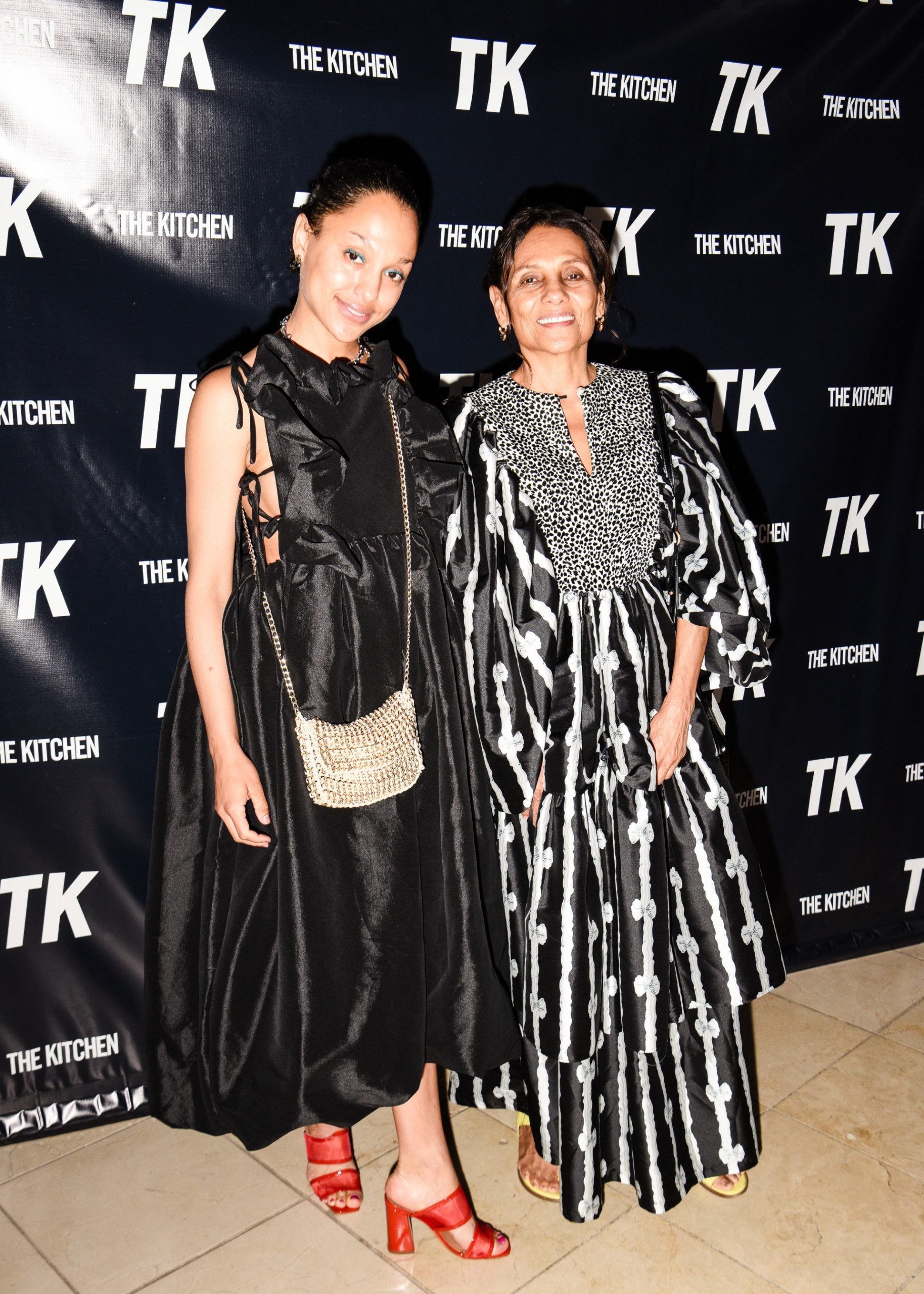
Yes, we are not of the institution, but we are of our communities to whom we belong, that’s the commitment. Who are some of your favorite up-and-coming designers?
I will say that Women’s History Museum has been one that I’ve continued to follow and admire. There’s also Dauan Jacari, who I think has been doing some really exciting work. And then there’s also iidkkkkkkkkk. This is who comes to mind in thinking of folks who are really growing, emerging, and who have been transformative in the avant-garde vision.
When you’re out with the “girls” where are you going?
This is a classic New Yorker thing to say, but I’m very much a deep stoop-hang individual. So you know I love to be with friends and family, making food, and sitting on the stoop with a glass of wine. That’s my happy place.
There’s this really interesting link between digital culture and fashion. So much of your work from your book, “Glitch Feminism” to this exhibition explores online culture and its implications on race, gender, and sexuality. I’m thinking about everything from Loewe’s Pixelated Spring 2023 collection to the way Telfar has democratized luxury goods and reimagined Instagram in this really brilliant way to engage and lift up its demographic online. Do you see digital culture as something that is currently informing contemporary style?
I think digital culture and models of technology have always informed style and the progression of a wide variety of trends and modes of expression. The whole frame of cyberspace has been transformed. The way that people are blending on and offline selfhood, and how people are using technologies to advance different printing mechanisms that blur ideas of what the machine is intended to do is so fascinating—especially when it’s enacting a different type of vision computationally that we then can wear and interact with. I also feel like there’s been a rise in this interest around textile work. A lot of different folks who are working with different mechanisms of stitching are also expressing an interest in digitality while bringing a new view that reflects the relationship between an artist’s hand and the machine. I see this everywhere. I do think that there have been moments as you’ve noted where the computer has its own presence via the pixel. This is something that continues to be really exciting for me.
I really enjoy Brooke DeVard’s podcast, Naked Beauty. At the end of each of her interviews she asks, “When do you feel most beautiful?” So in closing, I’d like to ask you the same.
As a new parent, I have loved the quiet moments in the morning before the day starts, where it’s myself, my partner, and my kid, and there’s no face on. I’m not necessarily even fully dressed for the day, but I feel exceptionally beautiful in that freshness, starting a new day together.



